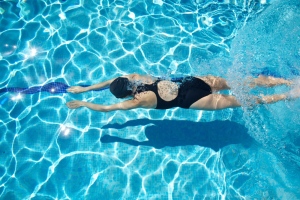Many people will attest to the fact that it is very difficult to stick to a training program and get in shape. This becomes even more of a challenge when you add in the issue of chronic pain; however, studies suggest that regular exercise can be extremely beneficial for those living with fibromyalgia. The benefits of regular exercise go beyond the physical and help with the emotional aspects of living with pain.
What is Fibromyalgia?
 Fibromyalgia is a debilitating condition that causes pain, fatigue, tenderness, stiffness and emotional suffering. It is estimated that 1-3% of the population are living with fibromyalgia. Treatment for the condition is difficult as, at the moment, there is no identified cause for the condition.
Fibromyalgia is a debilitating condition that causes pain, fatigue, tenderness, stiffness and emotional suffering. It is estimated that 1-3% of the population are living with fibromyalgia. Treatment for the condition is difficult as, at the moment, there is no identified cause for the condition.
Why should I Exercise?
Exercise is important for everyone, especially those with fibromyalgia. When a person is inactive their body and muscles will go through a decline. In order to preserve and strengthen the body, it needs to be challenged regularly. When you are living with constant pain it may seem that the best thing to do is move as little as possible; however, those with fibromyalgia have reported many improvements after undertaking a regular regimen of physical activity. These improvements include:
- A decrease in tenderness
- Improved muscularity
- A reduction in pain
- An improved sense of well-being
When you are living with fibromyalgia it is not uncommon to become secluded and isolate yourself from others. This is often due to the fact that the pain decreases how active you are. This cycle can lead to depression and emotional distress. When you exercise consider enlisting friends or family members as workout partners, or exercise in a group setting to add a much needed social aspect to your life. With the latter you may even meet someone else with fibromyalgia and you can support each other.
What should I do for Exercise?
 There are many forms of exercise for you to choose from, perhaps swimming is one of the best choices regardless of age or physical conditioning. Swimming helps to reduce the amount of weight that is put on your joints and provides strength benefits as well as aerobic benefits. An added bonus is that pools are usually heated and that heat can also help with pain and stiffness. Walking and cycling are other great choices for remaining active. The key is to choose something that appeals to you and that you enjoy so that you will be more likely to adhere to the program.
There are many forms of exercise for you to choose from, perhaps swimming is one of the best choices regardless of age or physical conditioning. Swimming helps to reduce the amount of weight that is put on your joints and provides strength benefits as well as aerobic benefits. An added bonus is that pools are usually heated and that heat can also help with pain and stiffness. Walking and cycling are other great choices for remaining active. The key is to choose something that appeals to you and that you enjoy so that you will be more likely to adhere to the program.
Before undertaking an exercise program you will want to consult a physician or a practitioner at the Pain Management and Injury Relief Centre (PMIR). The reason for this is that there may be underlying conditions that could be aggravated by certain types of exercise or intensities. Knowing your starting condition is the best first step towards improving your life and health with a fitness program. You may also want to begin by consulting a personal trainer, especially if you have not been that active previously. Most personal trainers have knowledge on training those with fibromyalgia and will be able to offer you guidance and support–you may even be more motivated to get your workouts done. The most important thing to keep in mind is to start slow and then build onto the foundation that you have created, as they say Rome was not built in a day.

